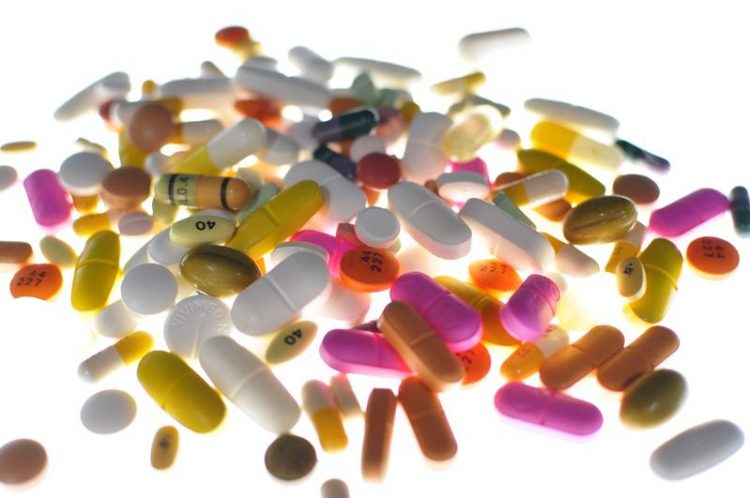A stress protein is essential for antidepressant action

Many antidepressant drugs are only effective, when they interact with the stress-related protein FKBP51. © MPI of Psychiatry / Isabella Wieser
While depression is the most common psychiatric disease worldwide, only one third of the patients achieve sustained remission following treatment with currently available antidepressants. Scientists at the Max Planck Institute of Psychiatry in Munich have now unraveled a mechanism by which the stress-related protein FKBP51 affects antidepressant efficacy.
In a combined interdisciplinary research approach working with cell cultures, mouse models and finally patient samples, the scientific team observed that FKBP51 acting together with antidepressants organizes intracellular complexes important for autophagy.
This intracellular process of “self-digestion” ensures efficient recycling of damaged material and has recently been linked to a range of different diseases. It could therefore serve as an effective target for novel antidepressant drugs and the implementation of personalized medicine.
The poor effectiveness of antidepressants is at least partially due to a lack in understanding of the mechanism of action of these drugs. The FK506 binding protein 51 (FKBP51) is a known regulator of stress-related receptors in the brain. It interacts with the so-called glucocorticoid receptor, thus influencing the stress hormone axis and stress physiology in general. Previous research at the Max Planck Institute of Psychiatry in Munich already provided a link between the genetic variants of FKBP51 and the efficacy of different antidepressants in patients.
Scientists around the group leaders Theo Rein and Mathias Schmidt have now unraveled the mechanism by which the protein FKBP51 affects antidepressant efficacy. The researchers found that FKBP51 orchestrates the composition and activity of protein complexes driving autophagy. Autophagy is an intracellular process of “self-digestion” that enables efficient recycling of damaged intracellular material, thereby ensuring cellular integrity and functioning. Autophagy has been established as a pivotal process in a range of (patho-) physiological conditions, including cancer, diabetes and more recently neurotransmission or neurodegeneration.
In the context of depression, the molecular actions of FKBP51 on autophagy synergize with those of antidepressants. “In cultured cells that do not express FKBP51, antidepressants could not elicit autophagy,” explains Nils Gassen. “Thus, FKBP51 sets the stage for antidepressants to act on the brain,” says Jakob Hartmann, together with Gassen first author of the current study.
Using mouse models, the researchers observed that missing FKBP51 largely abolished the effects of antidepressants on behavior and on autophagic markers. For example, treatment with the antidepressant paroxetine enhanced social behavior in stressed wildtype mice but not in those with deletion of FKBP51. To evaluate the clinical values of their findings, the team investigated the effects of FKBP51 in human blood cells. Protein analysis confirmed the correlation between the expression levels of FKBP51 and the levels of autophagy markers and FKBP51 was required for the effects of antidepressants on autophagic pathways. Treating cultivated blood cells from patients at the time of admission with antidepressants allowed prediction of the therapeutic outcome for the patient after six weeks.
“Taken together, our finding of FKBP51-dependent antidepressants’ effects on intracellular pathways, brain function and behavior strengthens the relevance of the genetic association of FKBP51 with antidepressant response, and furthermore substantiates the need for more targeted studies,” concludes Theo Rein. “Nevertheless, given the complexity of depression and the plethora of reported molecular effects of antidepressants, it is unlikely that all antidepressants, current or future, will depend on FKBP51 or any other single protein. Yet we suggest that autophagy-initiating mechanisms should be considered as a pharmacological target to improve the treatment of depression.”
Contact
Dr. Theo Rein
Project Group Leader
Max Planck Institute of Psychiatry, München
Phone: +49 89 30622-531
Email: theorein@psych.mpg.de
Dr. Anna Niedl
Press and Public Relations
Max Planck Institute of Psychiatry, München
Phone: +49 89 30622-263
Fax: +49 89 30622-370
Email: anna_niedl@psych.mpg.de
Original publication
Gassen NC, Hartmann J, Zschocke J, Stepan J, Hafner K, Zellner A, Kirmeier T, Kollmannsberger L, Wagner KV, Dedic N, Balsevich G, Deussing JM, Kloiber S, Lucae S, Holsboer F, Eder M, Uhr M, Ising M, Schmidt MV, Rein T.
Association of FKBP51 with Priming Autophagy Pathways and Mediating Antidepressant Treatment Response: Evidence in Cells, Mice and Humans.
PLOS Medicine, 11. November 2014
Media Contact
All latest news from the category: Life Sciences and Chemistry
Articles and reports from the Life Sciences and chemistry area deal with applied and basic research into modern biology, chemistry and human medicine.
Valuable information can be found on a range of life sciences fields including bacteriology, biochemistry, bionics, bioinformatics, biophysics, biotechnology, genetics, geobotany, human biology, marine biology, microbiology, molecular biology, cellular biology, zoology, bioinorganic chemistry, microchemistry and environmental chemistry.
Newest articles

Combatting disruptive ‘noise’ in quantum communication
In a significant milestone for quantum communication technology, an experiment has demonstrated how networks can be leveraged to combat disruptive ‘noise’ in quantum communications. The international effort led by researchers…

Stretchable quantum dot display
Intrinsically stretchable quantum dot-based light-emitting diodes achieved record-breaking performance. A team of South Korean scientists led by Professor KIM Dae-Hyeong of the Center for Nanoparticle Research within the Institute for…

Internet can achieve quantum speed with light saved as sound
Researchers at the University of Copenhagen’s Niels Bohr Institute have developed a new way to create quantum memory: A small drum can store data sent with light in its sonic…





















